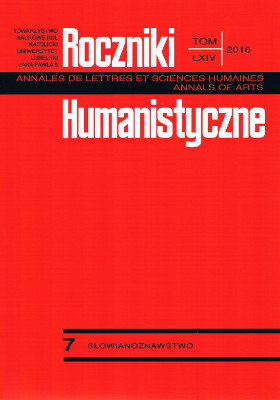From Metareference to Storytelling: Multimodality in Contemporary American Fiction
From Metareference to Storytelling: Multimodality in Contemporary American Fiction
Author(s): Grzegorz MaziarczykSubject(s): Literary Texts
Published by: Towarzystwo Naukowe KUL & Katolicki Uniwersytet Lubelski Jana Pawła II
Keywords: multimodality; total book; metareference; William H. Gass; Steve Tomasula; Jonathan Safran Foer Willie Masters' Lonesome Wife; VAS: An Opera in Flatland; Extremely Loud and Incredibly Close
Summary/Abstract: The aim of this paper is to discuss the use of multimodality, that is simultaneous employment of verbal and non-verbal semiotic resources, in American fiction from the postmodern novel of the 1960s to the recent examples of novels that depart from the conventional, purely verbal format. In William H. Gass’s Willie Masters’ Lonesome Wife, the first text to be discussed, multimodality ties in with obsessive self-reflexivity, typical of high postmodernism, and mobilisation of the metaphoric potential of the printed codex as object: the metaphoric equivalence between the book and the body of the eponymous heroine constitutes the core of Gass’s exploration of the textreader interaction. Like Willie Masters’ Lonesome Wife, VAS: An Opera in Flatland by Steve Tomasula relies on the semiotic potential of the book-body equivalence and contains explicitly metareferential elements; however, it goes beyond mere self-reflexive exploration of the status of a literary text: for Tomasula VAS as book and as novel becomes an embodiment of a transition from the human to the post-human condition. Finally, in Jonathan Safran Foer’s Extremely Loud and Incredibly Close, the last book to be discussed in this paper, multimodality is primarily employed as a storytelling device, which only indirectly — that is, via a juxtaposition of words and images — gives the novel a metareferential dimension.
Journal: Roczniki Humanistyczne
- Issue Year: 61/2013
- Issue No: 05
- Page Range: 281-295
- Page Count: 15
- Language: English

